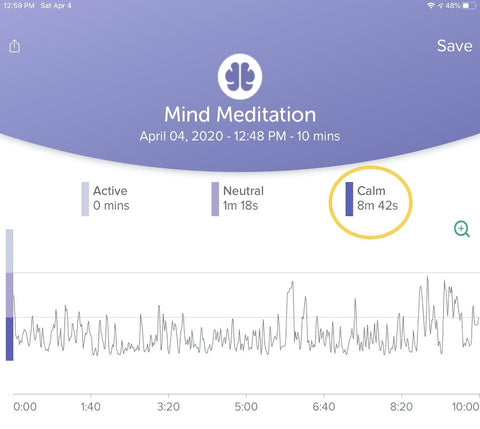
Parkinsons and Stress Reduction – Part of a Wellness Strategy
Michelle's Story:
At just 43, Michelle McIntyre received the devastating news she had Parkinson’s Disease. This condition affects more than 10 million people across the globe but only around a quarter of sufferers fall below the age 50 bracket.
Parkinson’s disease is a progressive disorder that affects the nervous system, in turn affecting movement. Those living with the condition often experience tremors, stiffness and slowness of movement but there can be other symptoms too, including problems with sleep, memory and mental health.
Determined to continue caring for her family and remaining in her job, Michelle launched herself into researching the disease and finding as many ways as possible to help herself. She soon realised that lifestyle changes such as exercise and stress reduction were significantly helpful, working alongside traditional medicine.
Michelle said: “Once I had been formally diagnosed, I quickly learned that neurologists had few tools in their arsenal beyond pharmaceuticals. But many with Parkinson’s Disease eventually reach a point when even the maximum doses of medication can no longer control the symptoms of the disease. Being only 43 when I was diagnosed, I began to look for other avenues that might help me live well for many more years despite having the disease.”
It was when her research revealed how anxiety played a role in the disease that Michelle began turning her attention to reducing stress in her life.
The Role of Stress
Statistics show that as many as 40% of Parkinson’s patients suffer from anxiety, which makes it harder to carry out day-to-day activities. In addition, stress and anxiety are underlying factors in reduced REM sleep and general sleep disturbances, common among Parkinson’s patients.
Over time, these sleep disturbances can cause a brutal cycle of fatigue that can reduce cognitive function and make fluid body movements more difficult.
“As time passed after my diagnosis, I began to be aware of the many ways in which stress exacerbated the symptoms of Parkinson’s Disease,” said Michelle. “The more stress and anxiety I felt, the more difficult it was to get my body to move correctly. My hands would stop working and I could not type and my walking would be affected.”
Michelle hit upon the idea of meditating to help relieve stress and anxiety but found consistent practice hard. She put this down to inexperience and inability to quiet her mind, a common issue with those learning the practice.
It was when she stumbled across an article about Sensate that she began to understand why the effects of meditation were important, particularly when it came to the vagus nerve.
How Sensate Helped
Like meditation, Sensate is designed to work by toning the vagus nerve. This nerve is often adversely affected by Parkinson’s and, research suggests, stimulating it can dramatically reduce inflammation. The combination of soothing this nerve and inducing a highly relaxed state was the perfect solution. And, using the Sensate it could be done in a much quicker time than meditating, alone.
Michelle immediately ordered one of the very first Sensate devices, hopeful that it would help her more consistently manage her stress levels. When she received the Sensate in 2019, it immediately became an essential part of her self-care arsenal. In fact, Michelle was so thrilled with the relaxation she experienced after using the Sensate, she emailed the Sensate founder Stefan Chmelik to let him know:
"I had to email you to say Sensate is quite simply the best wearable for stress reduction of the many that I have tried. At times, I can literally feel anxiety and tension pulsating through my body, and I have found that using the Sensate for 10 or 20 minutes has a profound effect in calming me. For someone who has long struggled to meditate, this is an extraordinary outcome!”
Not content with just feeling calmer, Michelle needed to see the science behind the device and track her brain activities. Her idea was simple but effective. She wore the second-generation Sensate prototype alongside another wearable device called the Muse. This device measures the brain’s activity using Electroencephalography (EEG) sensors. Michelle was then able to measure brain waves using just the Muse, and then using it to measure brain waves using just the Sensate’s functions.
The results were nothing short of remarkable.
|
This first output graph was generated using only the Muse headband, including the Muse audio track. |

|
This second output graph was generated while using the Muse headband along with the Sensate (both the vibration function on the breastbone and listening to the Sensate audio track.) The only function of the Muse headband in this session was to track brain activity. |

As the graphs show during the 10- minute session in which the Sensate was used, Michelle was able to maintain a far longer period in which her mind was calm. This data demonstrates the power of Sensate’s technology to calm and soothe the mind and body. More than this, the effects of Sensate are cumulative, meaning that the results produced by using Sensate in these sessions should become even more pronounced over time.
Michelle believes the Sensate has helped her decrease her levels of stress and anxiety, greatly improving her quality of life and helping her manage the effects of Parkinson’s Disease.
“The Sensate does reliably calm me down and it does so without much skill on my part,” said Michelle. “My mind can be wandering throughout the session, yet the toning of the vagus nerve appears to nevertheless activate the parasympathetic nervous system, stimulating relaxation. I also seem to sleep longer and deeper if I use the Sensate before going to bed. Stress is such a prevalent part of our modern world and I truly believe Sensate will help many people find a path to better health and wellbeing.”